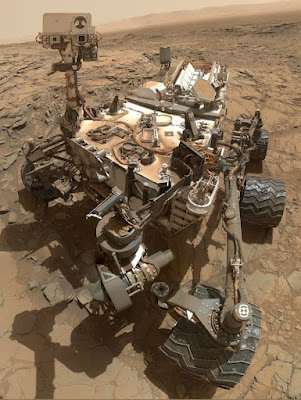Our Progress in Exploring Mars: Humanity’s Journey to the Red Planet
• Mars, also known as the "Red Planet," has fascinated humans for ages. From ancient tales to modern science fiction, the prospect of exploring and potentially living on Mars has captivated our attention.
• However, this interest is no longer a pipe dream; it is becoming a reality thanks to decades of ground-breaking scientific research.
• Let's look at how far we've come in our exploration of Mars, as well as what the future holds for humanity's desire to understand this strange planet.
The Early Era of Mars Exploration
• Mars exploration began in earnest with NASA's Mariner 4 mission in 1965, which took blurry photographs of the planet's surface.
• This mission refuted numerous misconceptions, revealing a barren, cratered landscape rather than a world teeming with life. By the 1970s, the Viking program had become the first to successfully land on Mars and undertake life-detecting experiments.
• While no clear evidence of life was discovered, Viking laid the groundwork for future research. The Mars Global Surveyor and Mars Pathfinder missions, launched in the 1990s, rekindled interest in Mars.
• Pathfinder's Sojourner rover was the first wheeled robot to go across the Martian surface, indicating that mobility exploration of the planet was conceivable.
Robotic Pioneers: Spirit, Opportunity, and Curiosity.
• With the launch of the twin rovers Spirit and Opportunity in the early 2000s, Mars exploration took a new course. These rovers outlasted their predicted lifespans, examining Martian geology for years and discovering traces of ancient water flow, suggesting that Mars once supported life.
• NASA's Curiosity rover made headlines in 2012 when it made a stunning sky crane touchdown. Curiosity, outfitted with cutting-edge scientific tools, studied the planet's soil, rocks, and atmosphere, finding that ancient Mars contained all of the components for life.
• Its findings changed the scientific narrative, transforming Mars from a barren wasteland to a place that could have once supported microbial life.
The modern era: perseverance and ingenuity
• In 2021, NASA's Perseverance rover advanced Mars exploration to new heights. Perseverance has landed at Jezero Crater, which is thought to be an old lakebed, to hunt for signs of past life and collect soil samples, which will be returned to Earth.
• Perseverance is accompanied by Ingenuity, a small helicopter that was the first to achieve powered flight on another planet. These missions are the most sophisticated attempts yet to uncover Mars' mysteries.
Global Collaboration: Mars Exploration Beyond NASA
• The United States is no longer the only country pursuing Mars exploration. In 2021, China's Tianwen-1 mission created history by successfully landing the Zhurong rover, demonstrating China's burgeoning space exploration capabilities. Similarly, the European Space Agency (ESA) and India's ISRO have contributed to missions such as Mars Express and Mangalyaan, respectively.
• These activities emphasize the global aspect of Mars exploration, which is motivated by common interest and ambition.
The Future: Human Missions and Colonisation
• The next huge leap is to transport humans to Mars. NASA's Artemis program, which intends to return men to the Moon, is viewed as a step toward future Mars missions.
• Private enterprises such as SpaceX are also playing an important role. Elon Musk envisions constructing a self-sustaining colony on Mars, using SpaceX's Starship to transport heavy goods and passengers there.
• While these ambitions are exciting, they are not without problems. The hostile environment of Mars, extensive journey periods, and the requirement for sustainable life-support systems all present substantial challenges.
• However, technological breakthroughs and worldwide collaboration have made these obstacles surmountable.
Why Should We Explore Mars?
• Mars exploration is more than just curiosity. It helps us comprehend the past of our solar system and provides predictions for Earth's future.
• Furthermore, technologies created for Mars missions have practical uses on Earth, ranging from renewable energy to advanced robots.
• Our trip to Mars exemplifies human inventiveness and perseverance. We've gone a long way since those first hazy photographs to rovers investigating old lakebeds.
• As we prepare for human trips to Mars, the Red Planet serves as a symbol of humanity's unwavering ambition to explore and understand. Mars is no longer a distant dream; it is our next big frontier.














.jpeg)


0 Comments